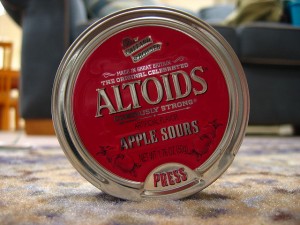Get the Packaging Right!

I don’t know if you have ever unboxed an Apple product – the packaging is so attractive and practical that it is quite an exhilarating experience! What makes Apple such an exceptional company is its eye for simplicity and detail in everything – its product (both hardware and software), its advertising, its outlets and the packaging of its products.
While one is now seeing some outstanding examples of packaging, for many years it was possibly the most underappreciated element in the marketing mix. While many agree with the proverb ‘Clothes do not make a man’, I would only partly agree with that statement when it comes to brands. Of course, any brand works when all elements in its mix come through into a strong unifying whole, but packaging has, and can play, a pretty important role.
It has been estimated in some markets that as high as 75% of purchase decisions are made in an outlet. The role of exterior packaging in such a case does become crucial. It becomes even more important with impulse purchase categories.
The next time you, as a new brand developer, are briefing your design agency for creating packaging for your product, keep the following in mind:
- The identity of a brand is first experienced via the packaging.
- Packaging has a very functional job to do and that is of protecting the product. Most companies tend to follow the packaging forms of existing brands; today, with technological advancements in materials, one must look at different materials for packaging that protect but, more importantly, help in differentiating your product vis-à-vis competition.
- Of course, differentiation is very important as far as packaging is concerned. The materials, the shapes, the branding, the colours, all can play a very important role in differentiation.
- Packaging can be used effectively for tactical advertising and promotions and that must be kept in mind.
- If you are looking at variant extensions, you must keep that point in mind as well.
Good packaging has actually contributed to some amazing successes; let me amplify with some examples:
- Altoids. I am sure some of you have tried the ‘Curiously Strong’ lozenges. Initially, the lozenges used to come in cardboard cartons. But the pivotal point for the brand came when the packaging was changed to tin boxes. This became a BIG differentiator for the brand and all the line extensions came in tin boxes. Altoids Mints came in rectangular tins, Altoids Sours in round tins and Altoids Chewing Gums in small, oblong tins. In fact, Altoids used the packaging in some of their ads as well – ‘Mints So Strong They Come in a Metal Box.’
- In 1969, Hanes wanted to market their hosiery to the mass market. They thought that a good way to penetrate the lower end of the market would be with unique packaging; they decided on packaging that was shaped like eggs! They branded the new line – L’eggs. L’eggs became so successful that it was spun off into a separate division.
- Heineken wanted to change the perception that quality imported beer came in glass bottles. At the time, cans were seen as ‘cheap’ packaging, not worthy of a premium beer. Heineken, however, took the risk and in 1999 introduced the beer in a keg can, an aluminium can that resembled the larger keg that was used by the beer brand. And it was a huge success.
- When Pringles was introduced in 1968, P&G decided to use cans rather than bags which were traditionally the way to package potato chips. However, since Pringles were made of potato paste and extruded, the chips were of the same shape and size. Packaging them in bags could lead to breakage of the chips; the cans safeguarded the chips and created a big differentiation for the brand.
Never underestimate the power of packaging. The Coke bottle has become iconic. Also, do remember that packaging is not just confined to physical products – they are equally relevant to service brands. Take McDonald’s for example – apart from the packaging of its food items, it lays a huge amount of emphasis on outlet décor and uniforms to create a distinct identity. The same is true for airlines.
Visual courtesy :
Altoids: https://www.flickr.com/photos/lobo235/
Apple: https://www.flickr.com/photos/kiuz/
